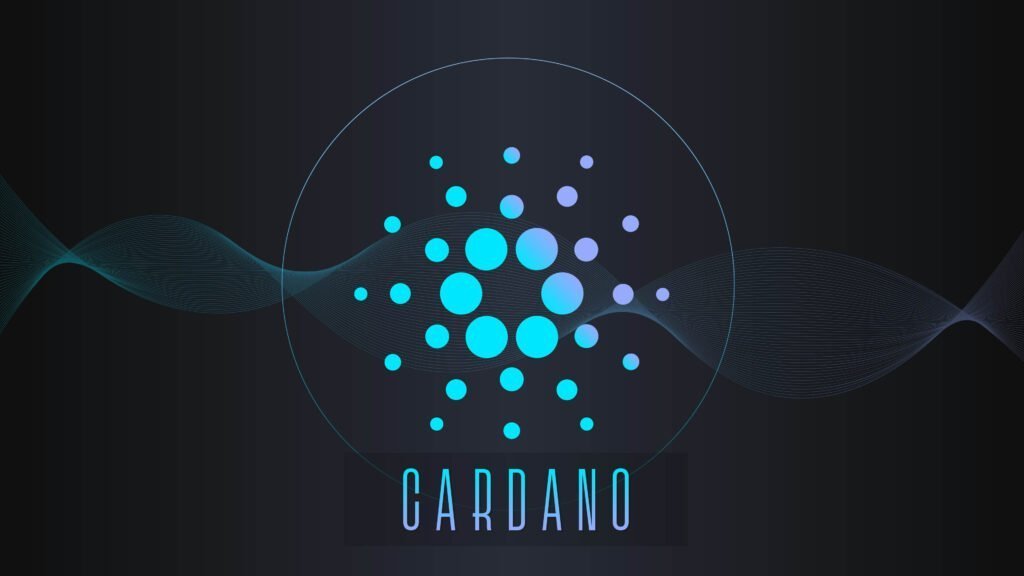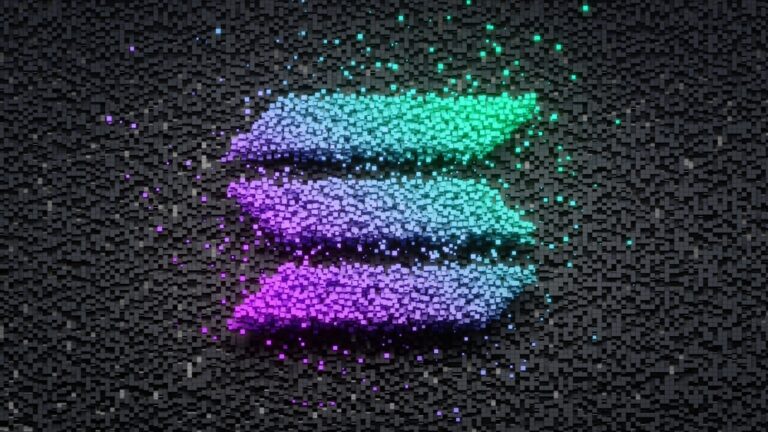The Hydra is a layer 2 scalability solution for Cardano that aims to improve transaction speed and minimize costs. Utilizing low latency and high throughput, the Hydra Head Protocol serves as the foundation for more advanced deployment scenarios involving isomorphic, multi-party state channels.
Hydra Head Protocol, compatible with the Cardano mainnet, allows developers to run a hydra-node for testing purposes. Cardano’s network efficiency is enhanced further through Hydra’s open source framework, which facilitates the creation of off-chain ledgers.
Developers can look forward to the Hydra Head implementation, as a developer preview is expected to be ready by the upcoming Cardano Summit. This will enable them to run one or more hydra-nodes online, opening a Hydra Head with a limited number of participants while feeding transactions.
Table of Contents
ToggleHydra and Cardano
Overview of Hydra
Hydra is a layer 2 solution developed for the Cardano blockchain, primarily aimed at improving the scalability of the network. Hydra consists of a family of protocols, with the Hydra Head Protocol being the first of these protocols. It lays the foundation for more advanced deployment scenarios using isomorphic, multi-party state channels. Each Hydra Head functions as an off-chain mini ledger shared among a small group of participants.
Hydra is designed to reduce costs, enhance throughput, and maintain security for Cardano’s UTXO-based, third-generation blockchain that supports smart contracts.
Relation to Cardano Network
The Cardano Network benefits from the integration of Hydra, primarily through enhanced scalability. Off-chain ledgers created through the Hydra Head Protocol operate in parallel with the mainnet and facilitate increased transaction throughput while also reducing the load on the mainnet.
To achieve this, Hydra connects multiple nodes to the Cardano network, where each node acts as a Hydra Head. A working Cardano node is a prerequisite for running a Hydra Head, as mentioned in this QuickStart guide.
Here’s a brief comparison of Cardano with and without Hydra:
| Feature | Cardano without Hydra | Cardano with Hydra |
|---|---|---|
| Scalability | Limited | Improved |
| Transaction TPS | Lower | Higher |
| Resource Usage | Higher | Lower |
| Security | High | Maintained high |
In conclusion, the Hydra layer 2 solution for Cardano contributes to a more efficient and scalable network. Both the Cardano mainnet and the off-chain ledgers created by the Hydra Head Protocol benefit from this integration, providing users with reduced costs and increased throughput while maintaining security.
Hydra Head Protocol
High Throughput and Low Latency
The Hydra Head Protocol is a layer-two scalability solution for Cardano, designed to increase the speed of transactions and provide low latency with high throughput. This is achieved through off-chain processing, which minimizes transaction costs while maintaining security. Hydra’s main goal is to improve user experience by offering fast and efficient transactions, making it particularly suitable for applications that require high volume and timely processing.
One aspect of the Hydra Head Protocol that enables high throughput and low latency is its use of state channels. State channels are off-chain ledgers that allow secure, fast transactions without relying on the main network. This enables parallel transaction execution and reduces the impact of each transaction on the overall network’s performance, significantly increasing the scalability of the system.
Channel-Based Architecture
The channel-based architecture of the Hydra Head Protocol allows multiple state channels to be in operation simultaneously. This isomorphic, multi-party state channel system enables the transactions to be processed independently, providing a more dynamic environment for supporting various use cases and applications.
With the channel-based architecture, several participants can open and maintain a Hydra Head channel. Each channel has its own off-chain ledger, allowing the involved parties to transact quickly and securely without the need for a global consensus. Information from the off-chain ledgers can still be verified and committed to the on-chain ledger when necessary, ensuring the integrity of the transactions.
In conclusion, the Hydra Head Protocol represents a significant advancement in blockchain technology by providing a layer-two scalability solution for Cardano. This innovative protocol relies on high throughput, low latency, and channel-based architecture to create a secure and efficient environment for off-chain transactions. Through its use of state channels and off-chain ledgers, the Hydra Head Protocol allows for faster, more secure transactions that enhance the overall performance and user experience on the Cardano network.
Implementation and Testing
Hydra Node and API
The implementation of the Hydra Head Protocol is made possible through the hydra-node and its API. The hydra-node is a dedicated software component that works alongside the cardano-node to enable Hydra functionality. The API allows developers to interact with the Hydra network, enabling them to create, join, and monitor Hydra Heads. Additionally, the documentation provided by Cardano offers comprehensive guidelines and instructions for developers to work with the Hydra Node and API effectively.
Mainnet and Testnet
As Hydra is still in the development phase, it is currently implemented as a proof of concept on testnets. This allows developers to gain valuable insights and identify potential issues before deploying Hydra on the main chain. The testnet phase is crucial to ensure the robustness and reliability of the Hydra Head Protocol. Once fully tested, Hydra will be integrated into the Cardano mainnet, bringing significant improvements to the network’s scalability and transaction throughput.
Benchmarking and Persistence
During the testing phase, the performance of the Hydra Head Protocol is evaluated using benchmarking techniques. As mentioned in IOHK’s blog, initial simulations of the Hydra Head Protocol in 2020 suggested a promising throughput of 1000 transactions per second (TPS). However, these benchmarks are subject to change as the implementation advances and real-world testing ensues.
Persistence is another critical aspect of Hydra implementation. Ensuring that Hydra Heads maintain their state and can recover in case of network disruptions is vital for a reliable off-chain processing system. The Hydra Head Protocol utilizes Plutus scripts, helping maintain the state of off-chain transactions and ensuring seamless integration with the Cardano mainnet.
In conclusion, the implementation and testing phases of the Hydra Head Protocol involve multiple aspects, including the Hydra Node and API, mainnet and testnet implementation, and benchmarking and persistence. Proper implementation and thorough testing will ensure that the Hydra Head Protocol delivers the anticipated scalability improvements to the Cardano network.
Smart Contracts and Tokens
Native Assets and NFTs
Cardano’s smart contract platform was introduced during the Alonzo upgrade on September 12, 2021. This upgrade enabled developers to create and deploy smart contracts on Cardano, opening up new opportunities for decentralized applications (DApps) and token creation. Native assets, which include both fungible and non-fungible tokens (NFTs), can be created using Plutus scripting on Cardano. Plutus is a platform for building smart contracts using Haskell, a functional programming language that is well-suited for high-assurance applications.
Native assets on Cardano offer an easy and cost-effective method for creating custom tokens. NFTs, which are unique digital collectibles, enable users to create, transfer, and trade digital artwork, in-game items, and other one-of-a-kind assets. Cardano’s native token, ADA, is a first-class citizen within the ecosystem, coexisting with other user-defined tokens.
Layer 1 and Layer 2 Interactions
Cardano’s smart contract platform is based on a UTXO model, which provides a solid foundation for reliable and efficient Layer 1 interactions. Due to the UTXO model, Cardano’s smart contract execution is deterministic and enables predictable gas fees. However, for more complex dApps and high-throughput transactions, Layer 2 scaling solutions are necessary.
Hydra Head Protocol is the first in the Hydra family of protocols, designed to enable Layer 2 scaling solutions for Cardano. Each Hydra Head works as an off-chain mini-ledger, shared among a small group of participants. Hydra Heads support isomorphic state channels, allowing for seamless transitions between on-chain and off-chain operations. This off-chain protocol allows for faster transaction processing and improved scalability, without sacrificing Cardano’s speed or security.
Storage
An important aspect of Hydra Head Protocol is its ability to optimize storage requirements. By reducing transaction validation and storage demands for high-throughput dApps, smart contract creators can achieve better performance and lower costs on Cardano. As a result, developers can build more sophisticated and resource-intensive applications on Cardano’s platform using Hydra Heads for scalability and efficient storage management.
Layer 2 Interactions with Smart Contracts
As Hydra Head Protocol is designed for off-chain interactions, it enables smart contracts to execute faster and more efficiently. The off-chain state channels in Hydra Head allow for smart contract processing without direct interaction with the underlying blockchain in optimistic scenarios. This enables faster execution, lower fees, and more concurrent transactions than would be possible in a purely on-chain environment.
In conclusion, the integration of smart contracts, tokens, and Layer 2 scaling solutions such as Hydra Head Protocol in Cardano’s ecosystem offers developers a robust platform for building decentralized applications. The combination of native assets, NFTs, optimized storage, and seamless Layer 1 and Layer 2 interactions make Cardano a competitive choice for dApp developers, with scalability and flexibility being key features of the system.
Real-World Applications and Use Cases
DeFi and Decentralized Finance
Cardano’s layer-2 protocol, Hydra Head, plays a significant role in enhancing the platform’s scalability and adaptability, making it more suitable for various real-world applications. One of the primary areas targeted for improvement is the decentralized finance (DeFi) sector.
Hydra Head aims to reduce transaction costs, speed up transaction processing times, and increase throughput. As a result, it enables a more seamless experience for users, developers, and the community alike in the rapidly growing DeFi ecosystem. Lower fees and faster transaction speeds are particularly beneficial for DeFi as they allow more cost-effective and efficient execution of operations like swapping tokens, providing liquidity, and lending.
User Manual and Getting Started
To tap into the benefits of the Hydra Head protocol, users need to acquaint themselves with its features and learn how to get started. The Cardano team is actively working on the development and stability of the hydra-node and Hydra Head protocol, which will eventually form a solid foundation for users to navigate and explore its potential.
As the Hydra Head protocol continues to advance and mature, comprehensive user manuals and guides will become available to aid the Cardano community in implementing the layer-2 solution in real-world applications effectively.
UTXOs, Snapshots, and DeFi-Related Upgrades
Hydra Head is designed to work seamlessly with Cardano’s unique Unspent Transaction Output (UTXO) model, which differs from the more commonly used account-based blockchain models. By leveraging UTXO, Hydra Head can facilitate faster and cheaper transactions, contributing to the network’s overall adaptability for various use cases.
An essential feature of the Hydra Head protocol is its ability to take snapshots of the mainnet state. These snapshots allow the protocol to record and maintain a current view of the blockchain while reducing storage requirements. Such features enable the efficient implementation of DeFi-related upgrades and functionalities on the Cardano platform, improving its competitiveness within the broader DeFi ecosystem.
In conclusion, the Hydra Head protocol holds significant potential for enhancing Cardano’s real-world applications in the areas of decentralized finance and beyond. As the protocol matures and becomes more accessible to the Cardano community, it will play a pivotal role in propelling the platform’s utility and adoption across various sectors.
Future Development and Community
IOG
IOG (Input Output Global), the company behind Cardano, has been working on the development and implementation of the Hydra Head Protocol. This protocol aims to improve Cardano’s scalability, allowing it to handle more transactions per second (TPS). They have already showcased a proof-of-concept and are currently benchmarking the real implementation in terms of throughput and finality.
LACE
The Layer 2 Applications and Contract Execution (LACE) project is another initiative within Cardano’s ecosystem that aims to enhance the capabilities of the Hydra Protocol. LACE focuses on integrating smart contract execution and other applications into the Hydra framework, enabling developers to leverage off-chain technologies for various use cases. The Cardano Summit regularly features updates on LACE progress and contributions from the Cardano community.
Stake Pool Operators
The Cardano stake pool operator community plays a vital role in the platform’s decentralization and security. By running nodes and participating in the Ouroboros proof-of-stake protocol, stake pool operators help to maintain and govern the Cardano network. They could potentially play a significant role in Hydra’s future development as well, collaborating on improvements and providing feedback on its functionality.
Sebastian Nagel and Hydra Protocol Extensions
Sebastian Nagel, a software engineering lead at IOG, has been actively involved in the development of the Hydra Head Protocol, providing updates and insights into its progress. Nagel and his team are exploring Hydra protocol extensions, which would enable additional features, such as isomorphic state channels, further enhancing Cardano’s scalability potential.
| Entity | Contribution to Hydra’s Development |
|---|---|
| IOG | Development and benchmarking of Hydra Head Protocol |
| LACE | Integration of smart contracts and applications into Hydra |
| Stake Pool Operators | Possible future role in governance and Improvement |
| Sebastian Nagel and team | Development and exploration of Hydra Protocol Extensions |
Throughout these efforts, the Cardano community remains an essential part of the platform’s growth. Its members are encouraged to provide questions, feedback, and even raise issues through channels such as GitHub release notes and WebSockets. As the Hydra project continues to evolve, the involvement of the Cardano community will undoubtedly play a crucial role in shaping its development and adoption.












